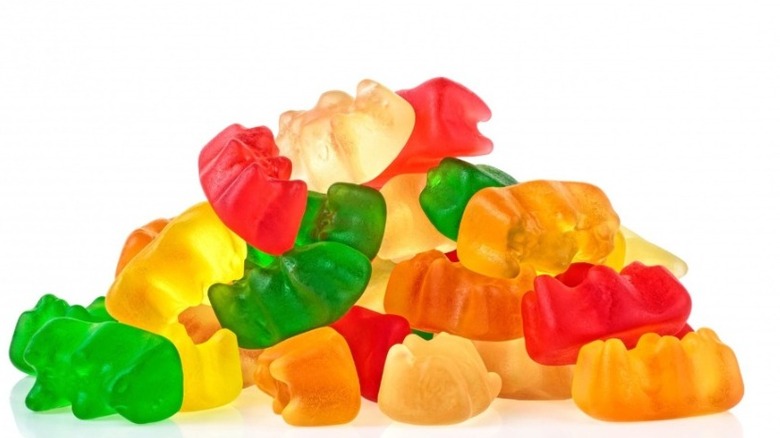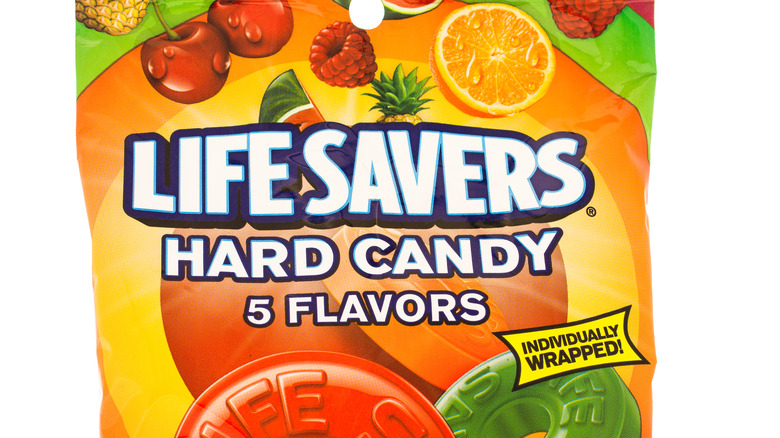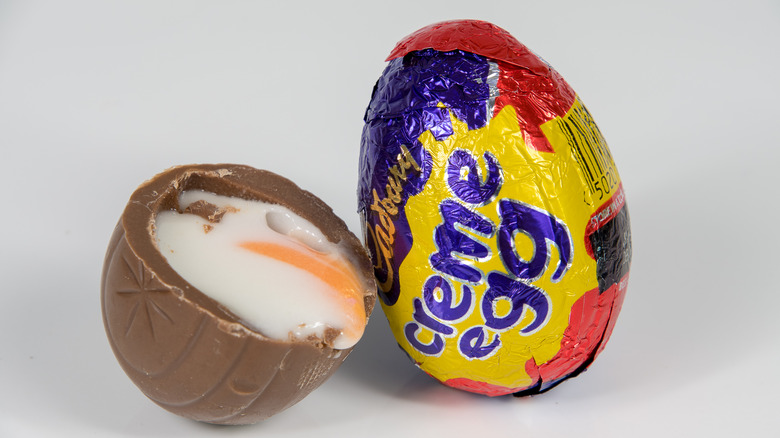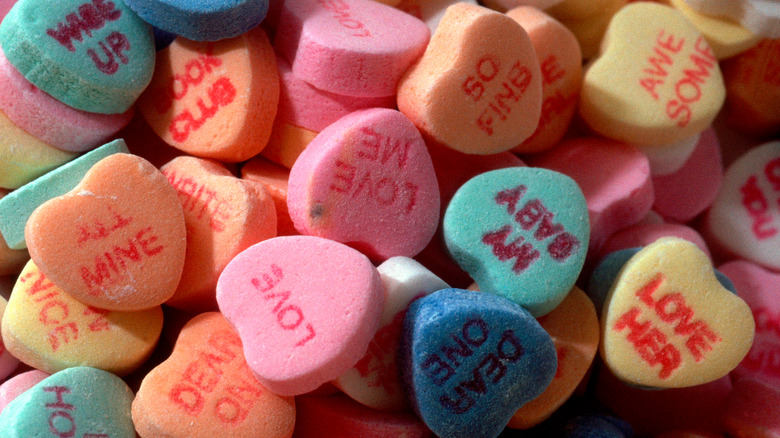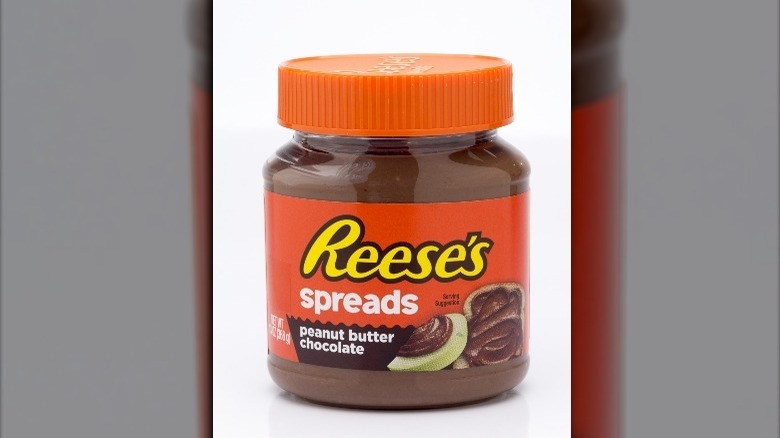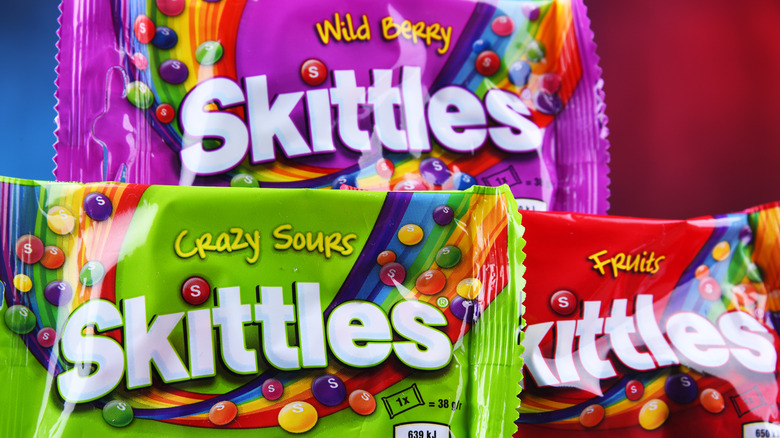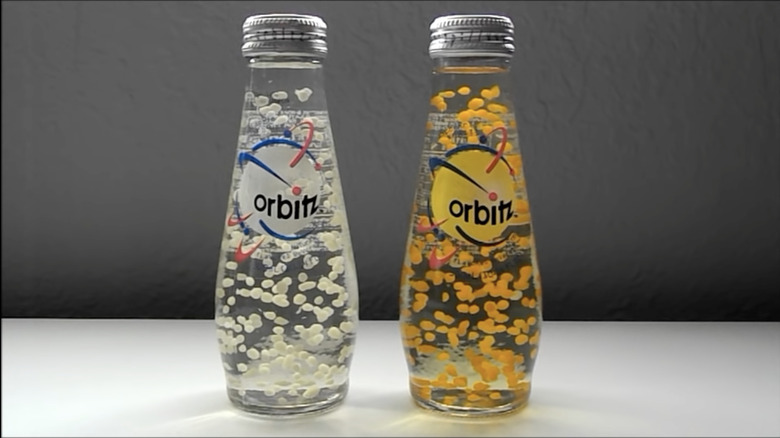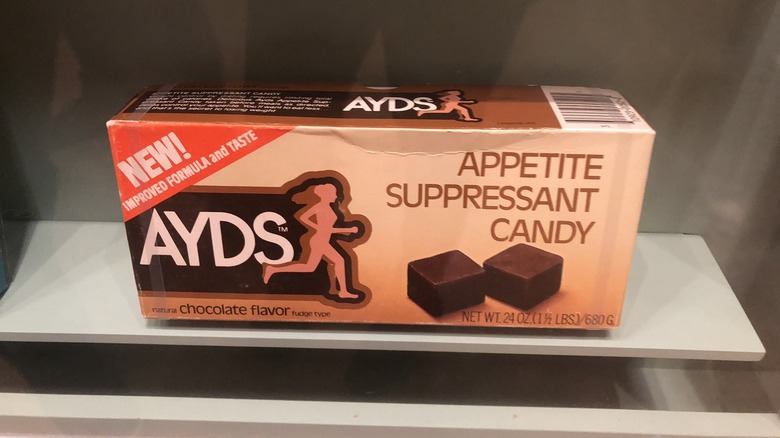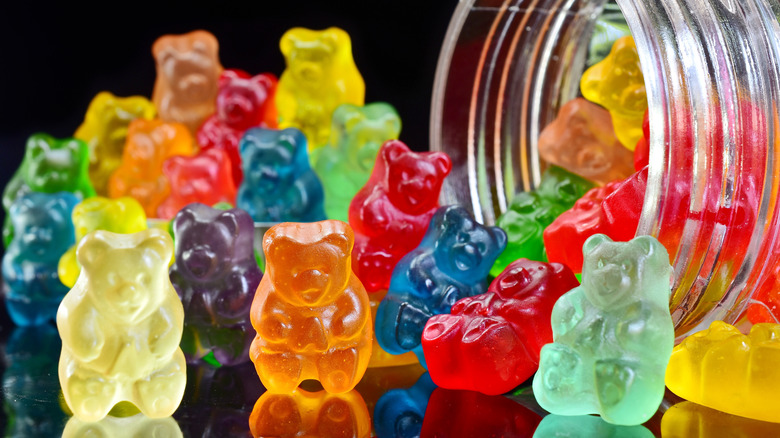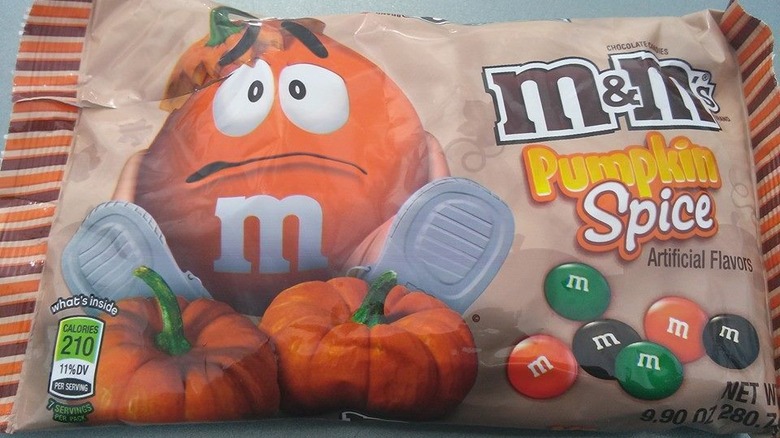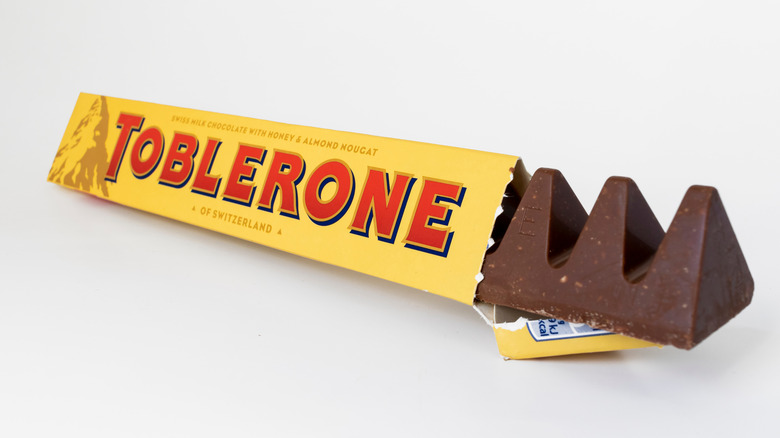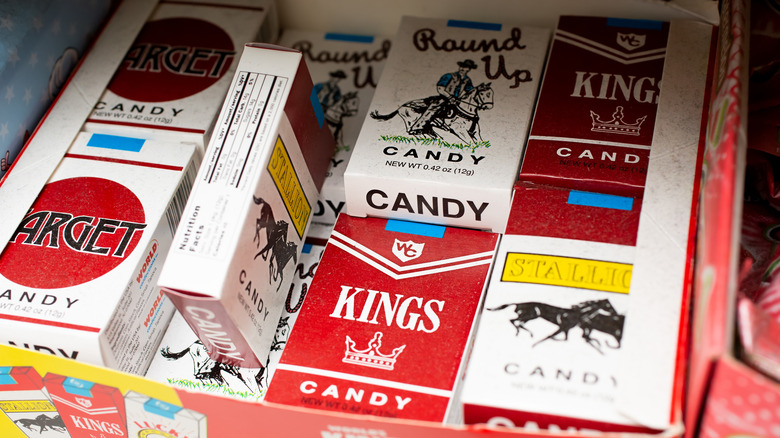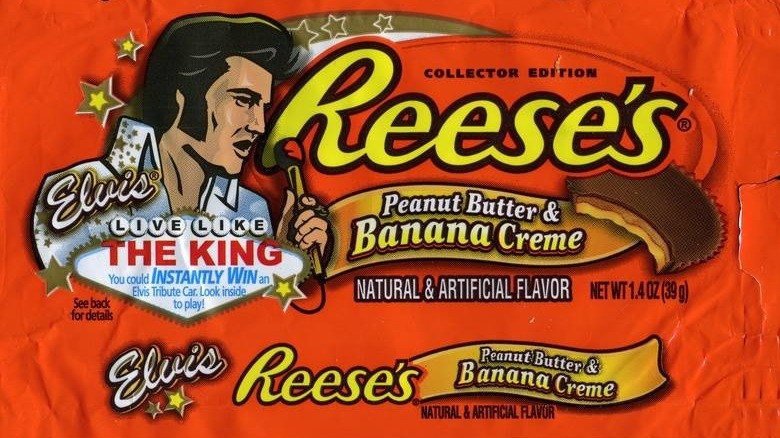The Biggest Candy Failures Of All Time
We may receive a commission on purchases made from links.
Candy. Everyone loves it, and it should be hard to mess up since it's made with an addictive product. Nobody's perfect, however, and that includes confectionery companies. Candy manufacturers have to try new stuff to keep themselves in the news and expand their market share. Sometimes they come up with a new candy bar that earns hype and accolades, but sometimes they release something that should've spent more time in research and development. Of course, one person's yuck might be someone else's yum. Taste is subjective. The debates over the merits of Swedish Fish show how one candy can be disgusting to some people and delicious to others.
Some candies, however, inspire nothing but disgust and revulsion. Sometimes you have to wonder how they left the test kitchen and ended up on store shelves without anyone realizing they were a terrible mistake. These special products can only be described as candy fails. Bad flavor is only one ingredient in the candy fail recipe. Good candies can become failures because of ill-advised marketing campaigns or shady business practices. Occasionally a bad product will combine with shoddy marketing and an incompetent business to climb the highest peaks of Failure Mountain.
We've rounded up the lowlights of the candy industry for your reading pleasure. You might remember a couple of these, but if you're lucky you've probably never encountered most of these products in the wild. A few were experiments from beloved brands that didn't pan out. Some sank entire companies. All of them are certified candy fails.
Life Savers Soda sinks on arrival
Life Savers candy is a classic treat, earning its place in countless pockets and handbags ever since its debut in 1912. Life Savers inventor Clarence A. Crane came up with the candy to serve as an alternative to chocolate that wouldn't liquify in the summer sun. In the 1980s, Life Savers executives decided that consumers would want to taste Life Savers in liquid form, and launched Life Savers Soda. The soda came in five fruit flavors based on the popular five-color Life Savers rolls.
According to Matt Haig in his book "Brand Failures," Life Savers Soda was a hit in taste tests. The flavors — which included grape, lime, and fruit punch — weren't anything you'd be surprised to see in a soda bottle. Despite auspicious beginnings, the soda tanked when it hit store shelves. Customers couldn't get past the Life Savers branding, which one brand critic said "gave consumers the impression they would be drinking liquid candy." Life Savers Soda drowned by the end of the '80s. One combination of Life Savers and fizzy drinks is still a hit, however — Wintergreen Life Savers can turn any bubbly beverage into a shooting geyser, as YouTube videos will attest.
Cadbury Creme Eggs secretly shrink
Easter is one of the happiest times of the year for candy lovers, with many brands releasing coveted limited-time-only offerings for the season. But no Easter candy sparks fan obsession quite as much as the Cadbury Creme Egg. Devotion to this seasonal treat is so strong that even minute changes to the formula can cause an outcry. Cadbury learned this the hard way in 2007, when it tried to secretly reduce the size of Creme Eggs without anyone noticing.
Fans didn't take this attempted subterfuge lightly. Creme Egg aficionado B.J. Novak famously roasted the brand on "Conan," bringing a new, smaller egg and a larger 2005 example to prove that they had indeed shrunk. Chowhound reported that after that fiasco, Cadbury updated their website to state that "since people's preferences vary from market to market, so do our products," giving them carte blanche to screw with sizing. Per The Daily Mail, Cadbury further reduced the size of the eggs in 2019, but at least this time they had the decency to admit it, saying they were forced to by the rising price of ingredients.
Spangler silences Sweethearts
Necco Sweethearts, also known as conversation hearts, are a timeworn (if maybe a little chalky) staple during Valentine's Day. The 2018 bankruptcy of manufacturer Necco endangered the future of this classic treat, wrote USA Today. Spangler Candy Co, the makers of Dum Dum lollipops, stepped in to buy the failing brand, which was at that point the oldest candymaker in America and had been in business since 1847.
The sale wasn't the end of the problems for Sweethearts, however. CNBC found that when Spangler moved Necco's antique manufacturing equipment to a new facility, the stamp that printed messages on Sweethearts broke in transit. Instead of pausing production to sort out the technical issues, Spangler pressed forward with mostly blank Sweethearts to meet customer demand. Candy Industry managing editor Alyse Thomson thought Spangler made a mistake in being so hasty, telling The Huffington Post, "It's better if Spangler waits to relaunch Sweethearts until the company has the formulation and production process just right, rather than rush them to market to meet demand."
Spangler quickly got its act together and now prints messages on conversation hearts again. It also introduced 21 new sayings based on popular modern love songs, a move that may prove divisive with customers who want the traditional words.
Reese's Spread ruins a good thing
We get what Reese's was trying to do by introducing a spread. Nutella maker Ferrero reported $12.3 billion in global revenue in 2020, so it made sense for Reese's to try to get a piece of the chocolate-and-nut spread cash cow. It should have been easy: Reese's peanut butter is already a spreadable product, so all the company had to do was make a halfway decent chocolate spread to mix with the peanut butter. It failed at that simple task.
A Popsugar taste test yielded mixed reviews for Reese's entry into the breakfast frosting market. Some tasters enjoyed it, but the ones who didn't had strong negative reactions. Adjectives used to describe the spread included "gritty" and "oily." Another complaint was that it failed to deliver the signature Reese's taste advertised by the label.
Reese's Spread landed with a thud and was quickly discontinued. Despite that failure, the company hasn't totally abandoned the spread market — it sells peanut butter that has garnered acclaim from outlets like Serious Eats.
Skittles Sweet Heat burns out fast
Spicy foods have recently become one of the hottest (no pun intended) segments in the snack market. A report by snack industry insider Kalsec (via FONA International) showed that 95% of Americans enjoy at least mild levels of spice in food, and 38% like hot to extremely hot foods. Another survey by market research firm Mintel reported that two thirds of U.S. consumers find sweet and spicy flavors appealing. With those numbers in mind, Skittles must have thought they made a sure winner when they introduced their Sweet Heat flavor.
Strange flavors and promotional stunts are a big part of Skittles' brand identity. The company has even gotten into Jelly Belly's disgusting candy lane by introducing a flavor that's supposed to taste like rotten zombies. In contrast to the zombie flavor, Sweet Heat Skittles were supposed to actually taste good.
A review in Junk Banter praised the spicy Skittles, comparing them favorably to more popular capsaicin confections like chili chocolates. Despite positive reviews, the flavor disappeared from store shelves quickly as it proved too strange for the average consumer.
Orbitz fails to take off
If you see the name Orbitz today, you probably think of the travel deals company. In the mid 1990s, the Orbitz brand was synonymous with a different product entirely: a soft drink with small balls of gelatin candy floating in it. Orbitz's parent company Clearly Canadian clearly didn't learn the lesson from Life Savers Soda that consumers prefer their candy and soft drinks to be separate. If they had, they probably wouldn't have dreamed up Canada's entry into the annals of regrettable confections.
Almost everything about Orbitz was ill-conceived. Atlas Obscura lists questionable flavors like pineapple banana cherry coconut, vanilla orange, and raspberry citrus. Fast Company quotes contemporary reviewers as saying the beverage was reminiscent of household cleaning products or medicine. Bustle's takedown of Orbitz notes that it lacked carbonation and used gellan gum to hold the neon-colored balls in place, leading to an unpleasantly thick and cloying texture.
Orbitz suffered from quality control issues, but if the product was released more recently it may have fared better. 20 years after the drink shuffled off this mortal coil, the boba tea craze showed American consumers that beverages with balls floating in them can be delicious.
Ayds diet candy has bad timing
When the makers of Ayds diet candy were brainstorming name ideas for their new product in the late 1930s, they had no idea what a headache they would see in a few decades. While the idea of diet candy may seem strange to us now, Tedium recounts that it was a hugely popular product during its peak in the mid 20th century. While early formulations of Ayds contained only caramel and a proprietary vitamin blend, later versions were filled with a local anesthetic called benzocaine. Ayds worked on the hypothesis that numbing people's tongues would reduce their desire to eat.
In the 1980s, the Acquired Immunodeficiency Syndrome (AIDS) epidemic began ravaging America, killing untold thousands of people. Despite the obvious bad associations that caused for Ayds' branding, the company stubbornly stuck to their name. ClickAmericana quotes Frank DiPrima, an executive at Ayds owner Jeffrey Martin, as saying, "The product has been around for 45 years. Let the disease change its name." Jeffrey Martin's tasteless and insensitive response to its PR crisis did nothing to reassure consumers, and sales dwindled throughout the 1980s.
A San Francisco Examiner article from 1988 notes that the product finally changed its name to Diet Ayds. The half-hearted rebrand was too little, too late, and Ayds didn't make it to the 21st century.
Haribo sugar-free gummy bears cause the runs
Everyone loves Haribo gummy bears. Their addictive texture and snackable size makes it all too easy to eat an entire bag in one sitting. For those of us who have to watch our sugar intake, Haribo's sugar-free variation on the classic bears appeared to be a perfect solution. We could eat all the gummy bears we wanted without worrying about unhealthy sugar. No one could have predicted that these harmless-seeming bears concealed a dark, fatal flaw.
Haribo chose to sweeten the sugar-free bears with Lycasin. As reported by Forbes, the main ingredient in Lycasin can have a powerful laxative effect. Researchers at The European Journal of Clinical Nutrition determined that a mere 40 grams of Lycasin was enough to cause gastrointestinal distress in adults, with only 25 grams needed to do the same for kids. One bag of sugar-free bears contained enough Lycasin to have this effect several times over.
Lycasin's bowel-loosening properties led to an avalanche of bad press for Haribo online, with reviewers recounting their gummy bear horror stories in hilarious and terrifying ways. Perhaps the most evocative testimonial came from Amazon user Luke in his review entitled "See you in hell, Haribo Sugar-Free Gummi Bears." He wrote that after eating too many sugar-free bears, "the floodgates of hell were opened and the damned, liquified souls of an entire bag's worth of gummi bears cried as they burned through my sphincter." Gross!
Pumpkin Spice M&M's leave tasters cold
Every year, the coming of autumn brings the same dependable experiences. The leaves turn orange, the air gets chillier, and brands release an onslaught of pumpkin-flavored foods and beverages. Starbucks shoulders a large portion of the blame for America's pumpkin spice overload, with its pumpkin spice latte (PSL) selling 424 million units in 2019, according to CNBC. The Business of Business details how the PSL's success has led to a pumpkin arms race, with companies producing gourd-flavored alcohol, workout supplements, and snacks, just to name a few.
With all that money sitting on the table, it's no wonder the M&M Mars decided to release limited-edition Pumpkin Spice M&M's in 2013. They're now discontinued, so you can't taste them for yourself, but a reviewer at The Impulsive Buy argues you aren't missing much. Adam, who was a fan of the similarly bonkers Pumpkin Spice Pringles, thought that the Pumpkin Spice M&M's mostly tasted like a jumbo version of standard M&M's with an aftertaste like "a wimpy version of Cinnamon Red Hots." This limited-edition flavor only stuck around for one season.
Toblerone's new pyramids anger fans
Toblerone has always portrayed a classier image than most supermarket candy bars. Perhaps it's because the bar is made of real Swiss chocolate, or because the almond and honey filling has a more adult flavor profile than your average nougat. The BBC found that the secret to the brand's success might have been its unique pyramidal shape. Toblerone's parent company, Modelez International, inadvertently sparked outrage in 2016 when it announced that it would make the triangles in a Toblerone bar skinnier and further apart, reducing the weight by around 20%. Much like Cadbury's size shenanigans, the change was blamed on rising ingredient prices.
Mondelez took the outcry from fans to heart, and the skinnier Toblerones only lasted two years. The bar returned to its bulkier shape in 2018, and a Mondelez representative acknowledged to the BBC that the skinnier Toblerone had been a mistake.
Candy cigarettes teach a generation of children to smoke
In the 1880s, the dangers of smoking were not widely understood. Smoking was such an innocuous and common hobby that candymakers thought nothing of making realistic-looking candy cigarettes for kids to play with. An article about candy cigarettes from Candyfavorites.com reveals that candy boxes from the '20s and '30s closely imitated the packaging of real cigarette companies like Marlboro and Camel so kids could feel like they were "smoking" the real thing.
Once Americans realized that smoking caused lung cancer, heart disease, and other ailments, regulators started looking closely at candy cigarettes. Thrillist recounts that legislators made several attempts to ban candy cigarettes in the 1960s and '70s, but the bills all ultimately failed after pressure from candy and tobacco lobbyists.
Candy cigarette manufacturers eventually wised up, renaming their product to candy sticks and designing labels that didn't emulate cigarette brands. Those changes may have not made a meaningful difference, however — a study in the British Medical Journal concluded that children who used candy cigarettes were more likely to become smokers later in life.
Reese's Elvis-inspired banana creme cups leave the building
The King of Rock and Roll is famous for many things. In the food world, Elvis' biggest legacy is the peanut butter, banana, and bacon sandwich. The origins of Elvis' obsession with this flavor combination are shrouded in myth, but Serious Eats details the most popular version of the tale. Allegedly, Elvis first tried this decadent snack at the Colorado Gold Mine company, a diner in Denver. Their version was truly over-the-top, with a mess of bacon, bananas, and peanut butter shoved inside an entire loaf of French bread. The cooks at Colorado Gold Mine then took the whole monstrosity and deep-fried it to order.
Reese's decided to honor The King with a banana creme-filled peanut butter cup in 2007, the 30th anniversary of Elvis' death. That might have been foreshadowing. Although the review wasn't entirely negative, a writer at Candy Yum Yum said that the "creme" was chewy and nougat-like, and the overall flavor of the cups was overly sweet and lacked real banana punch. Although the candy only saw a short production run, anything Elvis-related turns into a collectible. You can still buy ancient examples of the banana creme cups on eBay in their original wrapper.
